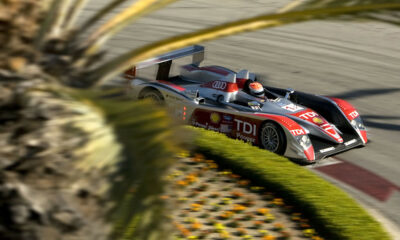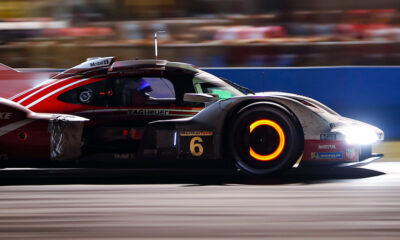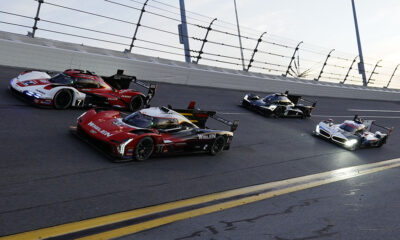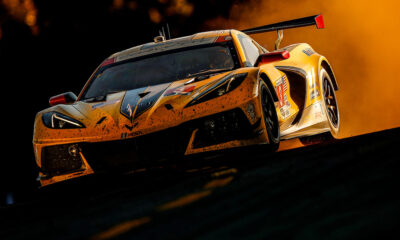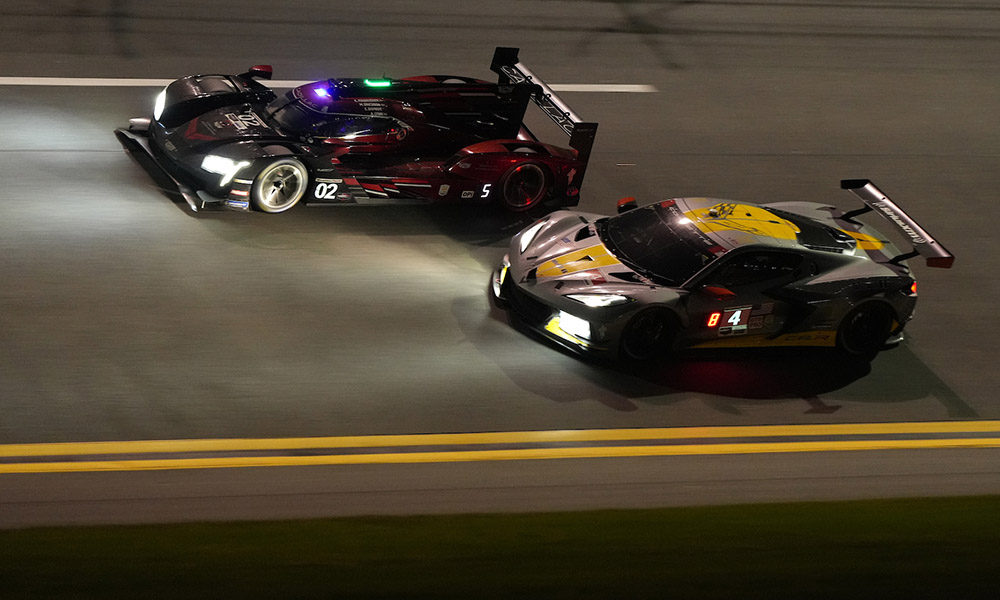
Photo: Michelin
A senior IMSA executive had a very serious question for Tony Ménard, the director of motorsport, Michelin North America on the eve of the Rolex 24 at Daytona: “Will we be ok with tires in this extreme cold?”
With a bustling 61-car field and forecasts all calling for temperatures in the upper 20 to very low 30-degree range Fahrenheit for the long overnight, there was reason for concern.
The lowest track temperature recorded in recent years of IMSA competition was 39 degrees in the closing stages of the November 2021, Petit Le Mans at Michelin Raceway Road Atlanta
Ménard advised that the Michelin engineers were confident that the tires would withstand the cold.
How Cold
The forecasts and Ménard’s assessment both proved to be correct. Michelin engineers reported overnight temperatures of 31 degrees with track temperatures of just 33 degrees.
While the racing line around the 3.56-mile circuit retained a few degrees of temperature from tires and exhausts, the pit lane and pit exit were literally ice cold.
The combination of cold tires on a cold track makes for anxious drivers and teams.
At the opposite extreme, Michelin engineers reported 127-degree track temperatures at sunny Lime Rock Park last summer.
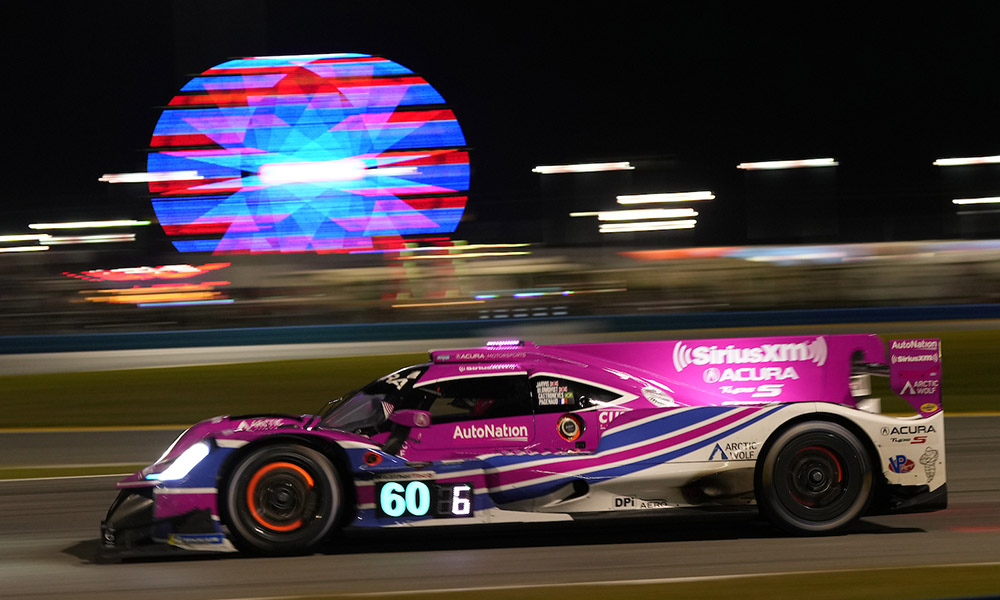
Photo: Michelin
Michelin and its Support Team
Michelin placed 18 engineers and tire specialists throughout the pit lane and paddock to assist teams in monitoring tire pressures, double stints, and tire changes throughout the race.
The Michelin service provider brought in large heaters to use in the tire pre-mount and mounting areas to add a few degrees of temperature to the tire sidewalls before mounting, which took place all night.
Team Strategies
To assist in tire warm up in the cold conditions, teams lightly scuffed, or more aggressively scrubbed numerous sets of tires during the week.
Hans Emmel, Michelin IMSA WeatherTech series manager, advised that teams employed several different strategies during the race. Some chose to double stint full sets, while others changed only their right-side tires.
Still others alternated between changing right-side tires on one stop and then left sides on the next stop to always have at least two warm tires on the car during the night and early morning hours.
IMSA’s Warm Hands, Cold Tires
Tire ovens, blankets, and warmers, such as those used at Le Mans, are not permitted in IMSA. As a result, officials and rival teams were on the lookout lest any teams be tempted to smuggle in tires warmed in their transporters or jury-rigged heat boxes.
Officials were equipped with infrared thermometers, and some used their ungloved hands to spot check fresh tires when they appeared on the pit wall before a stop.
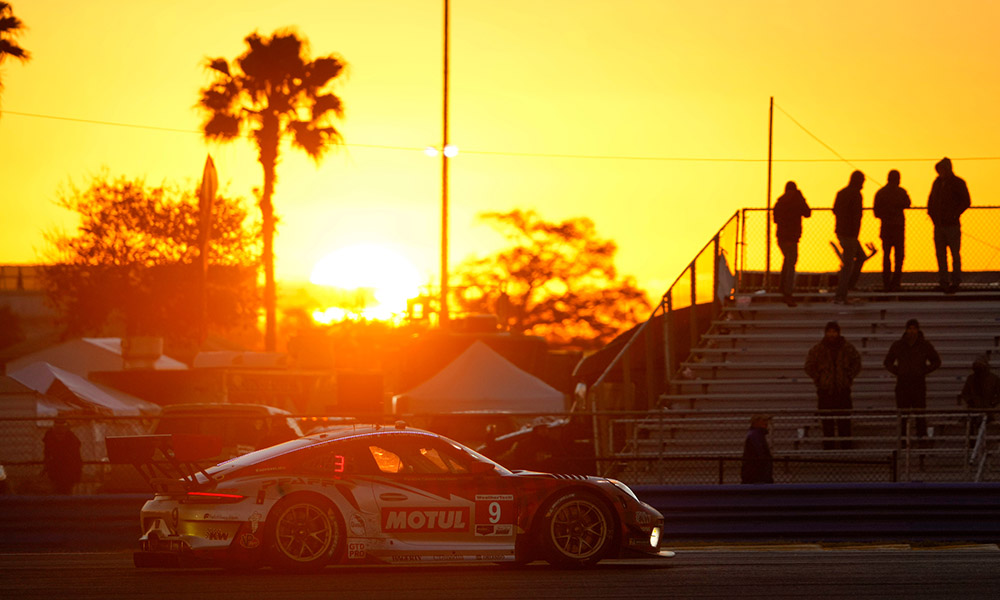
Photo: Michelin
No Way! WAY!
Amazingly, the track race lap record was broken and re-broken four-times during the frigid night. “Engines make more power in cold air, the key was having enough grip to make that combination work,” said Emmel.
Despite the brutal cold, long overnight, and 16 caution periods the Michelin fitted field of 61-cars completed a staggering 37,197 laps, a total of 132,421 miles, an average of 5,517.55 miles per race hour.
Up Next: The Sebring Bumps
Cold temperatures are rarely an issue at The Mobil 1 Twelve Hours of Sebring, the second of the four Michelin Endurance Cup events in 2022.
The fast, but extremely bumpy 3.74-mile Sebring International Raceway circuit presents a different challenge for Michelin as the bumps produce up to 18 feet of vertical wheel travel per lap.
Another challenge is the dark. The final 2.5 hours of the race follow sunset and, unlike the stadium lighting at Daytona International Speedway, Sebring is more like Le Mans with limited track lighting.
Michelin is the Official Tire of the track and the only tire manufacturer ever inducted into the Sebring Hall of Fame.
“We look forward to Sebring, which is one of the great traditional events in endurance racing,” said Emmel. “Hopefully, the sun will shine, the track and the fans will stay warm and the robust construction of our Michelin Pilot Sport race tires will help the teams and drivers manage the bumps.”




















